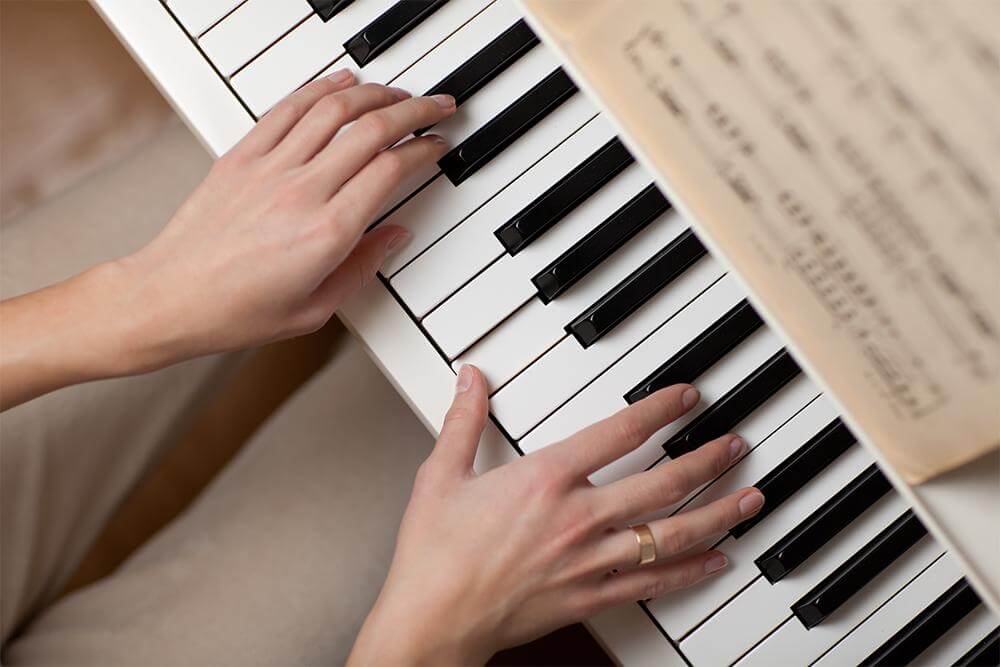In this article, I’ll go over everything you should know about the piano roll in your DAW. Then, you’ll have a greater concept of the way to take advantage of the piano roll’s editing features. Let’s get began.
What’s a piano roll?
In today’s DAW, the piano roll is a virtual grid representing time on the horizontal axis and MIDI notes on the vertical axis. It accommodates the entire range of notes that the DAW can play.
The piano roll in most DAWs ranges ten octaves from C-2 to C8.
When a DAW person presses the play button the time marker will pass via the roll. And any notes written on the grid shall be triggered to play a software or {hardware} instrument.
Notes could be either recorded utilizing a MIDI keyboard when a DAW person presses the record button, or notes could be clicked or pasted in utilizing the piano roll’s editing features.
Piano roll origins
Initially, piano rolls had been rolls of hole-punched paper that might be inserted into mechanical participant pianos to play a selected piece based on utilizing the assorted punch holes to trigger each note.
Right now’s digital piano rolls got their identity because the grid is programmed with MIDI notes that much like the analog hole punches, inform the DAW what notes to play.
After all, MIDI piano rolls are much more superior than their predecessors. They’re much more about giving visual control over sequences of notes within the digital realm than they’re about participant pianos in western saloons.
Let’s look at all the methods modern piano rolls make songwriting and beat-making simpler than ever.
How you can use the piano roll in your DAW to write tracks
The piano roll is where your DAW’s MIDI editor lives. In most DAWs the MIDI editor is organized as a grid representing time on the horizontal axis and a piano keyboard on the vertical axis.
Utilizing a MIDI editor you’ll be able to choose and edit the notes you need your MIDI devices to play—whether these be software VST devices MIDI controls for external gear.
There are various methods to do MIDI editing on the piano roll. Here are 9 ideas and tips to know.
1. MIDI pencil
The primary method most individuals begin playing with MIDI editing on the piano roll is with a MIDI pencil.
The MIDI pencil makes it possible to actually draw MIDI notes into the grid.
The length and value of the notes are decided by where on the piano you click on and the time subdivisions the grid is about to.
For instance, you may set the grid to be subdivided into quarter notes. So, each note you pencil in would be worth one-quarter note.
Utilizing a MIDI pencil is a fun method to mess around and try out concepts. However, if you wish to get repetitive association tasks or be extra organized about your note decisions there are other editing instruments that might work better.
2. Copy and paste
One of the cooler issues about MIDI enhancing is that it works just like any other piece of digital expertise, in that you could easily copy and paste concepts around anywhere.
That is particularly helpful because most DAWs make it straightforward to copy and paste everything into the grid—which means anything you progress around will keep in time.
There are various methods to use copy and paste within the piano roll.
For instance, once you have an idea you want, it’s tremendously simple to select different notes and move them around to invert chords, highlight melodies, create different voices, or whatever else.
To make it simpler to duplicate concepts without having to manually copy and paste each time check out the duplicate shortcut that most DAWs use.
Hot tip: A simple method to choose particular notes on the same key is to double click on the key on the piano roll. This may choose any related notes on the grid so you may rapidly move them around to try different inversions and chords varieties.
3. Choose, transpose and loop
Apart from copying and pasting, the piano roll’s visual interface lends itself properly to arrangement-related experimentation with fundamental editing features like choose and transpose.
Having the ability to lasso a group of notes and then slide them forward or backward, or transpose them up or down, makes it simple to hear how your concepts sound in different configurations.
Editing notes on the piano rolls work nicely when looped since you may get feedback about what your modifications sound like virtually immediately.
In most DAWs you possibly can set the length of your piano roll loop by dragging the upper right corner of the piano roll.

